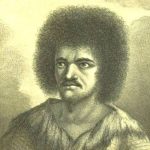
Country Overview:
Although sighted by Christopher COLUMBUS in 1493 and claimed for Spain, it was the Dutch who occupied the island in 1631 and set about exploiting its salt deposits. The Spanish retook the island in 1633, but continued to be harassed by the Dutch. The Spanish finally relinquished St. Martin to the French and Dutch, who divided it amongst themselves in 1648. The cultivation of sugar cane introduced slavery to the island in the late 18th century; the practice was not abolished until 1848. The island became a free port in 1939; the tourism industry was dramatically expanded during the 1970s and 1980s. In 2003, the populace of St. Martin voted to secede from Guadeloupe and in 2007, the northern portion of the island became a French overseas collectivity.
Location:
Island 300 km southeast of Puerto Rico
Geographic coordinates:
18 05 N, 63 57 W
Area:
Total: 54.4 sq km, land: 54.4 sq km, water: NEGL
Area – Comparative:
More than one-third the size of Washington, DC
Land boundaries:
Total: 15 km , border countries: Netherlands Antilles (Sint Maarten) 15 km
Coastline:
58.9 km (for Entire Island)
Climate:
Temperature averages 80-85 degrees all year long; low humidity, gentle trade winds, brief, intense rain showers; July-Novemeber is the hurricane season
Elevation extremes:
Caribbean Ocean 0 m
Highest Point:
Pic du Paradis 424 m
Natural Resources:
Salt
Population:
29,376 (July 2008 est.)
Ethnic groups:
Creole (mulatto), black, Guadeloupe Mestizo (French-East Asia), white, East Indian
Religions:
Roman Catholic, Jehovah’s Witness, Protestant, Hindu
Languages:
French (official language), English, Dutch, French Patois, Spanish, Papiamento (dialect of Netherlands Antilles)
Country Name:
Saint Martin
Government Type:
Overseas collectivity of France
Capital Name:
Marigot
Independence:
None (overseas collectivity of France)
National Holiday:
Bastille Day, 14 July (1789); note – local holiday is Schoalcher Day (Slavery Abolition Day) 12 July (1848)
Constitution:
4 October 1958 (French Constitution)
Legal System:
The laws of France, where applicable, apply
Executive Branch:
Chief of state: President Nicolas SARKOZY (since 16 May 2007), represented by Prefect Dominique LACROIX (since 21 March 2007)
Head of Government:
President of the Territorial Council Frantz GUMBS (since 7 August 2008)
Cabinet:
Executive Council; note – there is also an advisory economic, social, and cultural council
Elections:
French president elected by popular vote to a five-year term; prefect appointed by the French president on the advice of the French Ministry of Interior; president of the Territorial Council is elected by the members of the Council for a five-year term election results: Frantz GUMBS elected president by the Territorial Council on 7 August 2008





